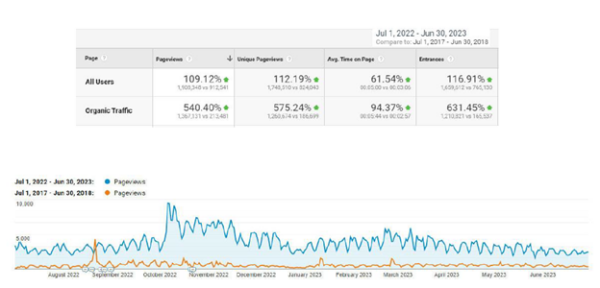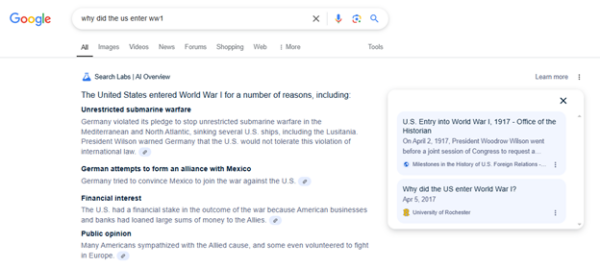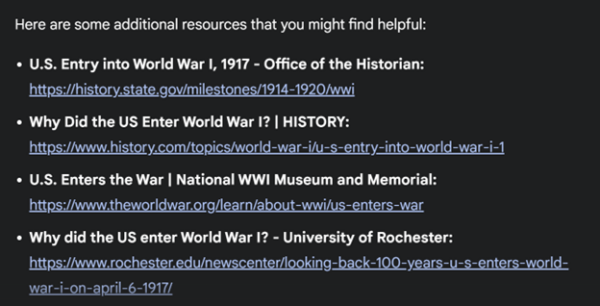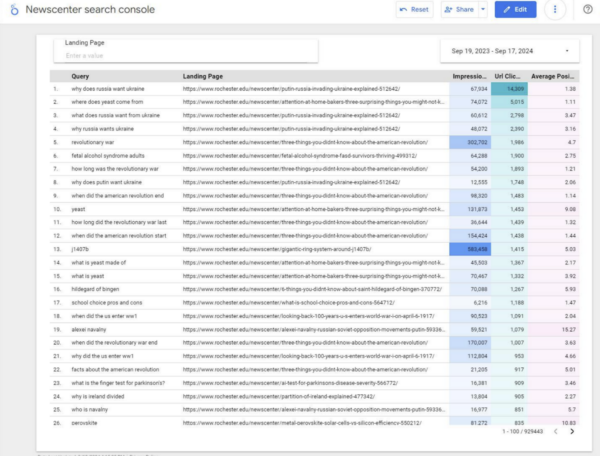What happens when search-related data shows your organization’s content isn’t delivering?
You dig deeper into data.
That’s what Brian Piper does as director of content strategy and assessment at the University of Rochester. At the Marketing Analytics & Data Science Conference, he explained what his team’s done and how it has expanded that SEO work in the era of artificial intelligence.
Seeing organic traffic drop to almost zero
At one point, a new article on the University of Rochester’s NewsCenter, which was promoted in a newsletter and on social media, attracted traffic the first week before plummeting to almost zero.
That traffic boost was good for the university’s business goal — to generate awareness — and the content’s primary KPIs — page views and new visitors. But Brian and his team knew those one-time traffic bumps wouldn’t be enough.
So, they analyzed the audience, developing a strategy to create and optimize content so future visitors asking similar questions would see the University of Rochester in their search results.
Their data-informed strategy worked. Organic search traffic page views from July 1, 2022, to June 30, 2023, increased 540% over July 1, 2017, and June 30, 2018.

Boosting rankings and organic search traffic
If you are like many marketing analytics and data analysts, SEO remains a top KPI for your organization. Yet, today’s SEO world is even less predictable than it has been (and it’s always been somewhat of a mystery).
Investigating little things could have a significant impact on your organic traffic. Brian says the process starts and ends with data. Analyze the current metrics against your strategy and goal. Then, make changes and measure the impact of those changes. Let’s look at several ways the University of Rochester does that and how you can, too:
Meta descriptions: The data showed that the University of Rochester ranked well for several high-volume search terms, but searchers didn’t click on their content. Brian optimized the meta descriptions by adding the specific program names (e.g., the Simon Admissions Team) and searchers started clicking and visiting the programs’ sites.
Images and social media: Conventional wisdom says don’t publish images with text in them because search engine crawlers don’t read the text. But that conclusion is no longer true, Brian says.
His team now advises schools and programs within the institution to put their logos into their published images. Now, when their images show up in search, users can see the institution name, Brian says.
The same text-in-image advice holds true for social media visual assets, including covers, banners, and headers.
Not only do social media images show up, but your social accounts may appear in search, too. Brian says that makes it even more important to include the right keywords in your profiles.
Voice search: Since more people, especially Gen Z and Gen Alpha, use voice search more frequently, Brian spends time testing voice platforms to see if the answers include branded search terms and strategic keywords.
“The trick with voice search is there’s one result,” Brian says. The university’s strategy to be included in that answer is to become a featured snippet within the text-based search results. Then, it massages that content to include its branding within the voice search results.
Brian explains, “When someone asks a question about good research universities in New York, we want it to say that the University of Rochester is one of those schools.”
Community search: Data also tells Brian that traditional search engines aren’t enough for the University of Rochester to attract organic audiences. Gen Z and Gen Alpha frequently prefer to search on community sites such as Reddit. So, Brian monitors those communities.
“We’re trying to figure out how to get our subject matter experts to participate in those communities, to add value in those communities, and go in and answer questions and help solve problems without pitching or selling anything in those channels,” he says.
ADVERTISEMENT
Learn How a CMS
Can Simplify Your Content Strategy
New to content management? Perplexed about organizing your brand’s content? Learn how a CMS (Content Management System) simplifies creating, organizing, and sharing content—all in one place. Gain valuable tips, tools, and insights.
Optimizing content for AI-generated results
Voice and community-related searches aren’t the only modern search traffic differences. These days, it’s also important to have data about where your content and brand appear in generative AI results, chatbots, and search engines.
Brian and his team see where the University of Rochester shows up for its targeted keywords — branded and unbranded — in ChatGPT and Gemini. “We’re searching on those within these different tools and seeing what content comes back and seeing how we can change that and influence that,” he says.
For example, the University of Rochester published an article titled Why Did the U.S. Enter World War I?” It featured insights from Hein Goemans, an associate professor of political science and author of War and Punishment: The Causes of War Termination and the First World War.
The title should work well for people asking this question in search — most likely high school students writing a paper for their history class and the ideal customer profile for the university. Expecting search-related traffic, Brian adds calls to action on the page for visitors to learn more about the history program at the University of Rochester.
But when Brian prompted ChatGPT with “Why did the U.S. enter World War I,” the answer didn’t obviously mention the University of Rochester article.
“The nice thing about using ChatGPT is you can just ask it, ‘Well, what are the sources? Where are you getting your information from this?’ And it’ll tell you,” Brian says.
It turns out that ChatGPT search did cite the article, but the ChatGPT response didn’t show it.
Next, the team looked at the cited content to see how it could tweak the university’s content to have a bigger impact on the AI-generated answer.
After Brian’s presentation, I did a Google search, asking, “Why did the U.S. enter WW1?” The Google AI overview featured the University of Rochester’s article as a source.

It also appeared as the fourth source listed when the question was posed through Google’s Gemini:

Though the University of Rochester article isn’t yet shared in a ChatGPT response, the article is cited for the same search by Perplexity, an AI search engine:

Using AI to help with SEO analytics
Designing content to turn up in generative AI prompt answers and search results isn’t the only way artificial intelligence can help your marketing analytics. It can do some analysis.
Brian says that while Google Search Console contains a wealth of useful data, it doesn’t present it in a way that’s easy to consume. “You can’t see the page URL and the keyword in the same view. And when you export from Google Search Console, it only gives you a portion of the actual data,” he says.
So, Brian got an assist from Google’s Looker Studio (free). He connected Looker Data Studio to their Google Search Console account so he could access all the data in one dashboard view. It shows the data for the university’s NewsCenter content: search query, URL, impressions, clicks, and average ranking position for the content.

“You can actually put in the URL at the top and it’ll tell you all the different terms that you rank for on that page. So, when you’re looking to optimize your content, this is a great resource. We use this all the time, and it [analyzes] 929,000 results on our NewsCenter site.”
But the AI assist doesn’t stop there. Brian exported the Looker Studio dashboard metrics into a spreadsheet and uploaded the CSV file to ChatGPT.
He crafted a prompt using Trust Insights’ Christopher Penn’s RACE framework — role, action, context, execute.
- Role: “You are a content marketing expert.”
- Action: “You will be coming up with strategic recommendations on new content we could create that would support our strategic priorities and be relevant for prospective undergraduate students, graduate students, or knowledge seekers.”
- Context: “Use the attached search console data to see areas where we currently have search potential and compare those to the general interest of our target audience and determine which content might also support our strategic priorities at http://boundless.rochester.edu.”
- Execute: “Create 20 new content ideas, please. Take your time.”
ChatGPT immediately returned content ideas strategically relevant to the topic areas for which the University of Rochester already ranks. “That will help us establish our expertise and authority in certain areas so that we’ll start ranking for even more terms, which will add extra search power for us,” Brian says.
Experimenting with AI, SEO, and AI SEO
The opaque nature of AI engines means that, like Brian, marketers and data analysts will need to explore, observe, and experiment.
Make some data-driven recommendations. Try some things and measure whether they work. If they don’t, try something else. If they do, know that it might not last when the search formula changes.
All tools mentioned in this article were suggested by the author. If you’d like to suggest a tool, share the article on social media with a comment.
HANDPICKED RELATED CONTENT:
Cover image by Joseph Kalinowski/Content Marketing Institute
